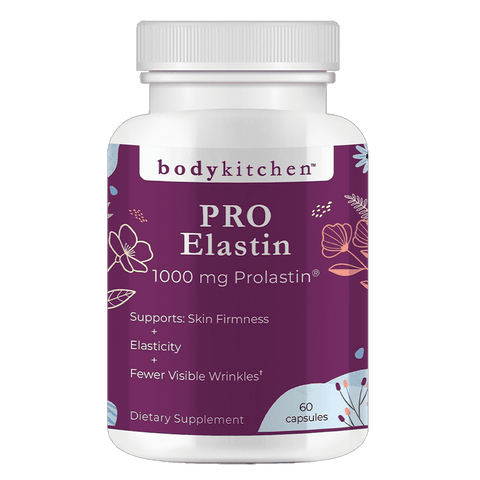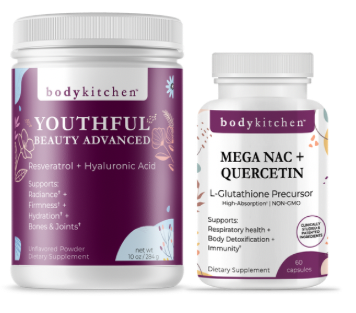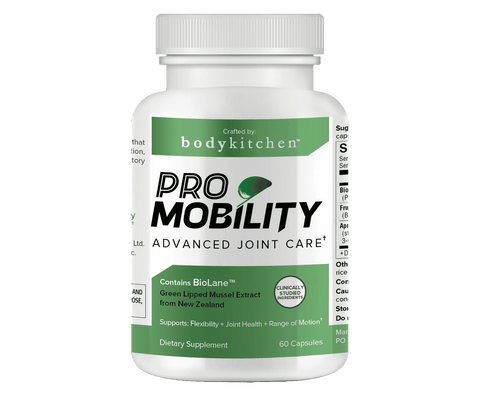Diving Deep: Green-Lipped Mussels and Their Many Benefits
Green-lipped mussels are a unique source of omega-3, a science-backed, natural anti-inflammatory linked to an assortment of important health benefits, from reducing joint inflammation and cellular breakdown, to treating arthritis and asthma.
A New Zealand delicacy, these colorful mussels are not readily available as a food source globally, which is why the use of New Zealand mussel nutritional supplements has become an increasingly popular way to get omega-3 benefits.
Let’s dive into the facts, science and health benefits of green-lipped mussels.
What is a Green-Lipped Mussel?
A shellfish from New Zealand, Perna canaliculus – the green-lipped mussel – is found along the 9,300 miles of coastline and sourced for aquaculture under the name greenshell™. Exclusive to this island-country, green-lipped mussels are is identified by its grayish-green shell and signature, vivid green edge.
The green-lipped mussel is a staple food of the indigenous Māori, who call it kuku and kūtai in their native language. At about 4 inches in size, it’s larger and milder in flavor than the traditional black mussel, which is roughly 2-2 ½ inches and has an intense flavor.
What are Green-Lipped Mussels Good For?
Green-lipped mussels are revered as a potent “superfood” with a complete profile of macro-and micro-nutrients, amino acids and omega-3 fatty acids – especially eicosatetraenoic acid (EPA) and docosahexaenoic acid (DHA). Plus, they contain an assortment of B-vitamins, minerals including zinc and selenium, and other beneficial nutrients, such as chondroitin sulfate.*
The New Zealand mussel is exposed to more sunlight as a result of its unique growing environment. In fact, the secret to its high omega-3 benefits may lie in its own nutrient-dense food source: marine phytoplankton.
This mussel food floats on the surface of the ocean, where they absorb the sun’s intense ultraviolet (UV) rays. Their naturally high levels of antioxidant offer protection against sun-related oxidative stress that would otherwise accelerate the breakdown and damage of healthy plant cells.
In addition to antioxidants, marine phytoplankton also contains an assortment of trace minerals, such as chondroitin sulfate, selenium and zinc, all of which contribute to the nutrient-rich properties of the New Zealand mussel.
Natural Anti-Inflammatory
Green-lipped mussel benefits are well-documented. Most impressive is the array of anti-inflammatory compounds shown to significantly aid human health. This is why this special source of omega-3 fatty acids can be a powerful ally in the fight against many age-related issues ignited by inflammation and cellular oxidation, including cardiovascular conditions, rheumatoid arthritis and asthma.*
While many nutrients contained in green-lipped mussels play strong supporting roles, its omega-3 benefits are largely due to DHA and especially EPA fatty acids. Abundant in fatty fish and sorely lacking in the standard American diet, both EPA and DHA are parts of a group of omega-3 fatty acids, a type of dietary fat involved in anti-inflammatory processes.**
- Eicosatetraenoic Acid (EPA)
EPA fatty acids are essential for healthy aging. There are well-known cardiovascular benefits associated with consuming plentiful quantities of EPA fatty acids, such as supporting balanced triglycerides, blood pressure and a healthy response to inflammation.*
Additionally, EPA fatty acids have been shown to have a positive effect in treating arthritis, particularly rheumatoid arthritis (RA), as well as mood and symptoms of menopause.***
- Docosahexaenoic Acid (DHA)
DHA fatty acids are the key structural components of the human brain, cerebral cortex, skin and retina, and of all cell membranes.* In pregnancy, consumption of DHA fatty acids is especially significant for the proper development of the fetal brain and retina, where DHA accumulates the most.*
In fact, a study on children whose mothers supplemented with a DHA supplement during pregnancy were found to have significantly better problem-solving skills at 9 months compared to those whose mothers did not supplement with DHA fatty acids.*
Treating Arthritis
Incredibly, 24% of American adults have arthritis.* Inflammation of the joints can wreak havoc on one’s comfort, mobility and quality of life.
Interest in the health benefits of green-lipped mussels was sparked in the 1970s when researchers observed that the Māori who lived along New Zealand’s coast had a lower incidence of arthritis compared to the inland population.*
Since then, dozens of scientific studies have been conducted globally to determine the effectiveness of greenshell™ in treating arthritis, both osteoarthritis (OA) and rheumatoid arthritis (RA), the most common types. Results are especially compelling in its use as an adjunct aid for OA, while studies into the effect on RA remain promising.
A look at the studies shows the mussel’s anti-inflammatory properties from eicosatetraenoic acid (EPA) and docosahexaenoic acid (DHA) may help fight joint inflammation, which is consistent with research on the body-wide, anti-inflammatory benefits of DHA and EPA fatty acids.
Osteoarthritis:
- A review of four clinical trials indicated that green-lipped mussel extract may improve joint function and comfort in adults with OA.*
- An additional green-lipped mussel benefit for individuals with OA may be reduction in GI discomfort from taking anti-inflammatory medications, according to an analysis of five studies.*
Rheumatoid Arthritis:
- A double-blind, 3-month study revealed that 66% of participants experienced an improvement across all measurement markers, including joint stiffness, swelling and discomfort.*
- Results of a 10-week animal model indicated that administering green-lipped mussel had the potential to inhibit inflammation in joints affected by rheumatoid arthritis.*
Humans are not the only mammals to gain from the omega-3 benefits of this New Zealand mussel. Due to the extensive body of research in treating arthritis, nutritional supplements for dogs that feature this natural anti-inflammatory increase options for protecting the joint health of our furry friends. One study revealed it improved the gait of osteoarthritic dogs.*
Treating Asthma
Asthma is a respiratory condition that affects 1 in 13 people in the U.S.* Green-lipped mussels can help ease the discomfort of asthma and increase quality of life by fighting inflammation of breathing passages that carry air to and from the lungs.
In a 6-week human study published in the journal, Respiratory Medicine, participants with asthma took 400 mg daily of green-lipped mussel extract for three weeks of the study, and a placebo for three weeks. Researchers found that taking the green-lipped mussel supplement significantly reduced airway inflammation and asthma symptoms.*
Consistent with these findings, another 8-week study found that taking 400 mg daily of New Zealand green-lipped mussel extract helped reduce the frequency of asthma symptoms and inflammation of airways.*
Inhibiting Pain-Producing Proteins and Enzymes
The beneficial, anti-inflammatory properties in this potent mussel acts on certain pain-producing proteins and enzymes found in tissue throughout the body, working in a variety of ways to reduce inflammation and discomfort.
In joints, scientists believe that green-lipped mussel may help keep cytokines in joints from flaring up.* These destructive proteins, particularly TNF and IL-1, are implicated in each phase of progression of rheumatoid arthritis, and may be responsible for generating pain associated with osteoarthritis.**
Most cytokines are produced by immune cells in response to inflammation. But when too many cytokines exist, they can go rogue and attack healthy cells, including cartilage-renewing chondrocytes and those that produce synovial fluid. This can lead to excess inflammation and autoimmune issues.*
Cytokines also play a critical role in causing and maintaining inflammation of the airways, contributing to asthma and other breathing difficulties.*
Are Green-Lipped Mussels Farm Raised?
Most New Zealand mussels are farmed raised along the eastern coastline for aquaculture, an important industry to the island-country. But before they reach the mussel farm, they are gathered in the wild in a process called spat collection – the first in a series of steps involved in mussel farming.*
Spat are juvenile shellfish still in larval form that float on the surface of the ocean until they can hitch a ride on a suitable host, like seaweed. Eventually, they wash ashore in the millions, where spat collection takes place. Ninety Mile Beach is the hub of spat collection.*
Once at the underwater mussel farms, wild-caught baby mussels are transferred to nursery ropes where they remain for about 6 months before being reseeded on longlines where they remain for another 9-12 months until peak maturity.* Water and mussel quality are monitored by New Zealand government laboratories throughout.
During mussel harvesting, barges containing special equipment remove mussels from the lines for processing, which includes sampling the water and mussels for the presence of toxins. The time frame from spat collection to harvest takes about 18 months.
Green-lipped mussels to be used for omega-3 supplements are transported to extraction facilities, such as Biolane™.
Biolane™ is a premium New Zealand green-lipped mussel extract used in high-quality nutritional supplements that uses a unique process to cold-extract the bioactive portions of the mussels – those rich in omega-3 fatty acids, DHA end EPA, then freeze-dried to preserve potency and freshness.
Additional Nutrients in Green-Lipped Mussels
The New Zealand mussel is exceptional in its nutritional profile. Not only is it packed with tissue-building amino acids and prized omega-3s – DHA and EPA fatty acid – it contains many other naturally occurring nutrients, some of which have powerful health benefits of their own and are found in many anti-inflammatory supplements for joint function and other health concerns.
Chondroitin Sulfate
This chemical is found in human and animal cartilage, the tough connective tissue that cushions joints by absorbing fluid. Chondroitin sulfate may help block harmful enzymes and proteins that attack healthy cartilage, which is especially vital for maintaining healthy knee and hip function as you age.*
Because chondroitin sulfate also functions as a building block of cartilage, it is a common ingredient in supplements for joint pain. In fact, scientific research suggests that chondroitin sulfate may be effective for treating arthritis, particularly OA, which develops as cartilage gradually wears away with aging or due to injury.*
One such study indicates that chondroitin sulfate can help prevent narrowing of joint space and has anti-inflammatory activity.*
Zinc
As an essential mineral, your body cannot produce zinc and is dependent on food and supplement sources. Zinc is involved in numerous health processes ranging from immune function and wound healing (and promoting skin health overall) to DNA synthesis and cell renewal. In addition, zinc also contributes to the chemical reactions of hundreds of enzymes.*
The retina of the human eye contains high concentrations of zinc. Research suggests that taking supplements with zinc and antioxidants have been shown to reduce age-related vision degeneration, possibly by countering cellular damage in the retina.**
Iron
This essential mineral is vital for producing hemoglobin, an oxygen-carrying protein in red blood cells, and myoglobin, a protein that shuttles oxygen throughout muscle tissues. Iron is necessary for the body to maintain healthy growth and development.*
According to the NIH, rheumatoid arthritis and other chronic health conditions can divert iron from blood circulation and interfere with the body’s ability to use stored iron.*
For optimal absorption of iron regardless of the source, consume along with vitamin C-rich foods, such as oranges, strawberries, bell peppers and broccoli.
Selenium
The last mineral that is naturally occurring in green-lipped mussels is selenium, a component of various proteins and enzymes that play a role in reproduction, producing DNA and protecting cells from damage. Called selenoproteins, these proteins and enzymes are mostly stored in muscles, but are also highly concentrated in the thyroid gland, where they assist with metabolism of thyroid hormones.*
Selenium has antioxidant properties that help break-down peroxides that can lead to inflammation.
Because selenium is a trace element, you only need to consume a small amount for good health.
B-Vitamins
This family of vitamins helps to convert the food you eat into energy, in addition to many other vital processes. The New Zealand green-lipped mussel contains 5 out of 8 B-vitamins:*
- B1 (thiamine) – supports growth and function of cells
- B2 (riboflavin) – reduces oxidative stress and inflammation of nerves
- B3 (niacin) – creates energy; repairs DNA; has antioxidative effects
- B6 (pyrixodine) – helps metabolize macronutrients; supports immune and brain health
- B12 (cobalamin) – supports metabolism; essential cofactor in DNA synthesis
Green-lipped mussel in omega-3 supplements and anti-inflammatory supplements
Thanks to advanced technologies in food processing and nutrition, the health benefits of green-lipped mussels are accessible outside of their native New Zealand to anyone seeking natural anti-inflammatory support to help manage joint pain, arthritis, asthma or other health issues.
You can order green-lipped mussels that are packaged for safe home delivery through a few online specialty food retailers, which arrive frozen or fully cooked, depending on your location. But for most people, a green-lipped mussel supplement may be the most convenient way to get the omega-3 benefits.
For optimal freshness and potency of its natural anti-inflammatory properties, some proprietary green-lipped mussel extract brands, such as Biolane™, employ freeze-drying methods to remove water at low temperatures, thus preserving the omega-3s, EPA and DHA fatty acids, in a stable, long-lasting powder.
In fact, powder may be the preferred omega-3 supplement form, according to research. While New Zealand mussel extract is also available in oil form, the powder extract has been shown to significantly improve absorption of EPA fatty acids, according to research.* This may indicate that oil is subject to nutrient oxidation and degradation at a higher rate than powdered extract.
These study results are good news to anyone who has searched online for natural supplements for joint pain or for anti-inflammatory supplements in general, and wants omega-3 benefits from this unique and potent marine source.
Written and reviewed by the nutrition and science experts at Body Kitchen, developers of Pro-Mobility featuring Biolane™ green-lipped mussel extract. To learn more about Pro-Mobility and the sourcing of its unique New Zealand mussel ingredient, go to Promobility.com.
These statements have not been evaluated by the Food and Drug Administration. This product is not intended to diagnose, treat, cure, or prevent any disease.
















